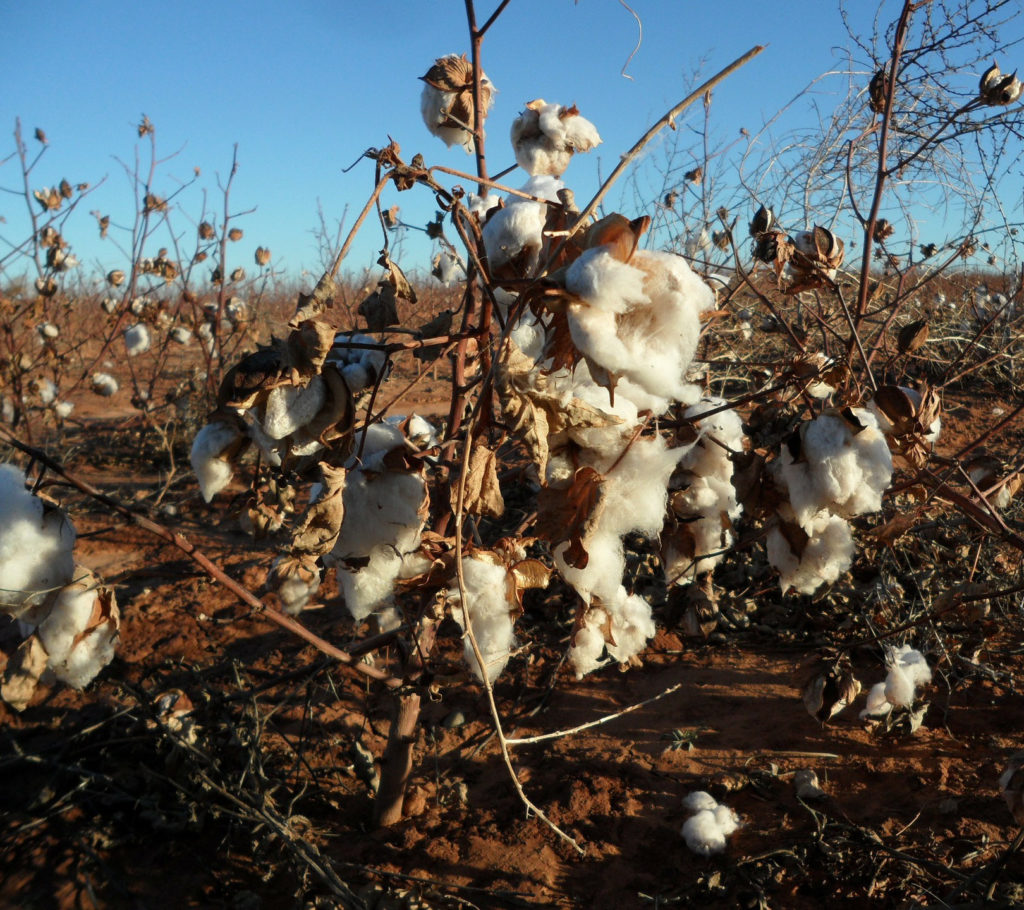CURRENT PROJECTS are listed by Research Area, the objectives of the Research Area and researchers involved.
The Corn RAC established the following objectives for 2023 – 2024 research efforts:
- Objective 1. Establish the association between inoculum intensity, crop production factors, disease development and weather in experimental plot trials.
- Objective 2. Disseminate corn disease information and management techniques through various outputs.
The following researchers will be participating:
Tom Allen, Ph.D., Extension/Research Professor, Mississippi State University.
Mandy Bish, Ph.D., Assistant Professor, Plant Sciences & Technology, University of Missouri.
Mark Busman, Ph.D., Research Chemist, USDA-ARS, Peoria.
Martin Chilvers, Ph.D., Associate Professor, Field Crop Pathology, Michigan State University.
Pierce Paul, Ph.D., Professor, Extension Specialist, Plant Pathology, Ohio State University.
Paul “Trey” Price, Ph.D., Associate Professor, Agronomic Crops, Louisiana State University.
Alison Robertson, Ph.D., RAC Chair, Professor and Extension Field Pathologist, Iowa State University.
Damon Smith, Ph.D., RAC Co-Chair, Associate Professor and Extension Specialist, University of Wisconsin – Madison.
Darcy Telenko, Ph.D., Assistant Professor, Botany and Plant Pathology, Purdue University.
Kiersten Wise, Ph.D., Professor, Extension Specialist, University of Kentucky.
Download the complete Corn RAC statement of work (SOW) here.

Progress
Since the National Predictive Modeling Tool Initiative (NPMTI) launched, the corn RAC has:
- Collected 48 site-years of data to validate and refine the predictive models for tar spot and deoxynivalenol, and develop models for gray leaf spot and northern corn leaf blight.
- Developed and validated primer sets for Phyllachora maydis (tar spot), Cercospora zeae-maydis (gray leaf spot) and Exserohilum turcicum (northern corn leaf blight).
- Published a prediction model for tar spot caused by Phyllachora maydis.
- Launched the free “Tarspotter” app that allows corn producers to access the tar spot models on mobile devices.
- Saved corn growers $36 per acre in production costs by using Tarspotter to make fungicide decisions and avoid unnecessary applications. More than 300 users per day accessed Tarspotter in 2023.
- Contributed live data to the EDDMapS and Crop Protection Network to track the occurrence of tar spot in the U.S.
- Given more than 200 presentations with respect to NPMTI to more than 20,000 stakeholders.

The Cotton Research Area Committee (RAC), established the following objectives for 2023 – 2024 research efforts as part of the National Predictive Modeling Tool Initiative (NPMTI):
- Objective 1. To create DNA detection tools for cotton pathogens.
- Objective 2. To monitor foliar diseases in cotton fields using airborne spore sampling of fungal cotton pathogens.
- Objective 3. To create cotton epidemiological models for target spot, areolate mildew, and seedling diseases to predict pathogen populations, disease progression, and their impact on the cotton crop.
Researchers from 11 + cotton producing states will be participating.
Download a copy of the complete Cotton RAC statement of work (SOW) here.
The Wheat Research Area Committee (RAC), established objectives for 2023 – 2024 research efforts for the National Predictive Modeling Tool Initiative (NPMTI) as follows:
- Objective 1. To develop a database of historical disease epidemics in the U.S. that will serve as a foundation for the modeling effort of cereal rust and leaf blotch epidemics at the state and regional levels.
- Objective 2a. To quantify associations among pathogen inoculum density, disease development, and weather variables in small plot trials, initially focused on Parastagonospora nodorum, causal agent of Septoria nodorum blotch (SNB).
- Objective 2b. To quantify associations among airborne inoculum concentration on onset, development, and spread of leaf, stripe, and stem rust in small plot trials.
- Objective 3. To quantify associations among pathogen inoculum, disease development, and weather variables in commercial fields, focused on the cereal rust and wheat blotch complexes of disease.
The following researchers will be participating:
Kelsey Anderson, Ph.D., Assistant Professor, Plant Pathology, Kansas State University.
Erick DeWolf, Ph.D., RAC Chair, Professor, Plant Pathology, Kansas State University.
Thomas Isakeit, Ph.D., Professor & Extension Specialist, Field Crops, Texas A&M University.
Uta McKElvy, Ph.D., Associate Extension Specialist Plant Pathology, Montana State University.
Tim Murray, Ph.D., Professor, Extension Plant Pathologist, Washington State University.
Pierce Paul, Ph.D., RAC Co-Chair, Professor, Extension Specialist, Plant Pathology, Ohio State University.
Madalyn Shires, Ph.D., Assistant Professor, Extension Plant Pathologist, South Dakota State University.
Of counsel: Jake Westlin, C.P of Policy + Communications, National Association of Wheat Growers (NAWG).
Download a copy of the complete Wheat RAC statement of work (SOW) here.

Progress
The Wheat RAC continues to make progress on developing models of wheat stripe rust. These models help identify key source regions for regional epidemics in the central Great Plains region of the USA months before disease outbreaks occur. These predictions are supplemented with an additional set of models that help growers evaluate the risk disease based on local conditions. These models are currently be tested in other states prior to full-scale deployment.
Collaborating Organizations
The Research Area Committees (RAC) of the National Predictive Modeling Tool Initiative are supported by two collaborating organizations: Los Alamos National Laboratory (LANL), and the National Agricultural Genotyping Center (NAGC).
LANL has developed a suite of forecasting tools to anticipate human health trends. The LANL models will be adapted to forecast plant disease outbreaks, as well as identify potential new disease threats. Over time, baseline background levels of various pathogens can be established, which will help with anomaly detection and serve as an early warning system for our nation’s food security.
LANL is one of the founding agencies behind the creation of the NAGC, which launched in 2016. NAGC is a producer-directed, not-for-profit, 501(c)(5) corporation that focuses on commercializing the research of others by making scientific discoveries available to producers and their advisors. NAGC has experience managing complex multi-state Initiatives. It administers NPMTI as the Networking & Facilitation Office.
NAGC initiated the concept of post-harvest sampling of soil and crop residues to quantify pathogen loads so that appropriate management decisions can be made prior to the next growing season. The concept was enhanced by Dr. Alison Robertson of Iowa State University with the addition of in-season monitoring for pathogens using air samplers that monitor for pathogen spores. NAGC then led the successful charge to get the enhanced proposal funded through the U.S. congressional appropriations process, which became known as the National Predictive Modeling Tool Initiative.
NAGC is the lead laboratory for NPMTI in the development of assays for detection and quantification of new pathogens. It makes NAGC-developed plant pathogen assays available on an open-source basis to extension researchers at cooperating land grant universities. NAGC will also provide diagnostic testing services to each RAC without charge, thus allowing the RAC to focus its resources on field-based research, data collection, and analysis.
LANL has established objectives for 2021 – 2022 research efforts for the National Predictive Modeling Tool Initiative (NPMTI) as follows:
- Objective 1. Refine analytics and models for the purposes of analytics and models for the purposes of crop disease forecasting.
- Develop algorithms for Wheat blotch diseases and specific corn and cotton diseases identified by crop partners (e.g., tar spot, areolate mildew).
- Refine LANL disease database for corn, cotton, and wheat-based on user testing on an ongoing basis.
- Objective 2. Develop a lateral flow-based assay for detection of mycotoxins in the field.
- Perform literature review of current state of the art for mycotoxin detection in the field. Collect requirements from corn and wheat partners for mycotoxin type, technical, and operational specifications for a lateral flow or alternative fieldable platform.
- Begin development of assay(s) required for mycotoxin detection.
- Work to design lateral flow or alternative fieldable platform for mycotoxin detection (one or more depending on requirements).
The LANL Research Team on the National Predictive Modeling Tool Initiative is led by:
Sheila Van Cuyk, Ph.D. – Research Scientist, Bioscience Division, LANL & NPMTI project chair.
Alina Deshpande, Ph.D. – Group Leader, Biosecurity and Public Health, LANL & NPMTI co-chair.
Download a copy of the complete LANL RAC statement of work (SOW) here.
NAGC has established objectives for 2021 – 2022 research efforts for the National Predictive Modeling Tool Initiative (NPMTI), as follows:
- Objective 1. To develop validated, quantifiable assays for diseases of concern to corn, cotton, and wheat RACs.
- Objective 2. To standardize testing among and across all labs that are currently (or may someday) be involved in testing services for the NPMTI and review and refine current tests.
- Objective 3. To provide testing services for 6,000 total samples at no cost to the RACs to help researchers focus resources on field-based study, data collection, and analysis.
The NAGC team on the National Predictive Modeling Tool Initiative is led by:
Zack Bateson, Ph.D. – NAGC Research Scientist & NPMTI project chair.
Megan O’Neil – NAGC Laboratory Manager & NPMTI project co-chair.
Download a copy of the complete NAGC statement of work (SOW) here.
New Tools
AIDO4Crops (Analytics for Investigation of Disease Outbreaks for Crops) is a decision-support tool designed to enhance situational awareness during unfolding disease outbreaks by providing detailed background information on disease trends from historical growing seasons. Using curated data from up to ten years ago, AIDO4Crops provides users with the ability to easily identify previous growing seasons that have similar disease trends to the current season.
AIDO4Crops uses a similarity algorithm to find the closest matching historical growing season to ongoing situations in the field. The tool asks a series of questions to collect data for on-going field conditions. The same information has been collected for each historical growing season. The similarity algorithm uses these values to identify the most similar historical occurrence and provides extensive data on this occurrence. The data presented in various tabs of AIDO4Crops include a geographical map of occurrences, a time series of occurrences, and detailed textual descriptions of the crop conditions. This allows users to find years that exhibited similar disease trends to their current growing season, and then use the historical details described in AIDO4Crops to understand whether to reuse the same approaches for controlling crop diseases.
Point of Contact: For questions and comments about AIDO4Crops, please contact deshpande_a@lanl.gov

